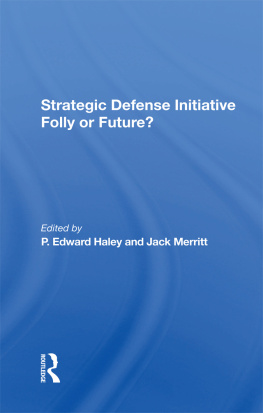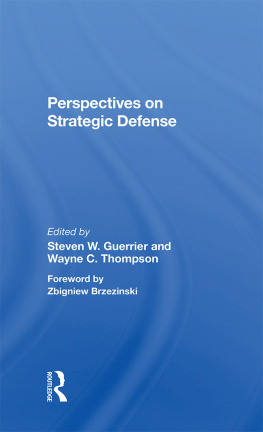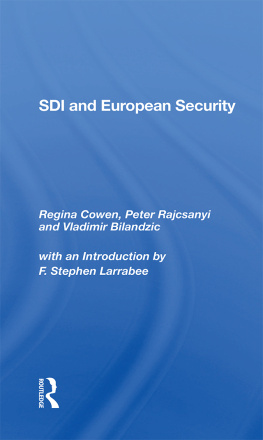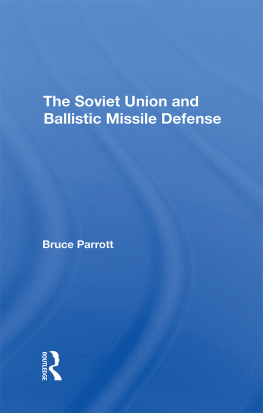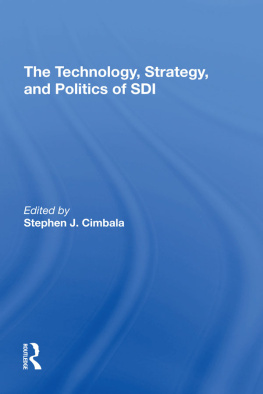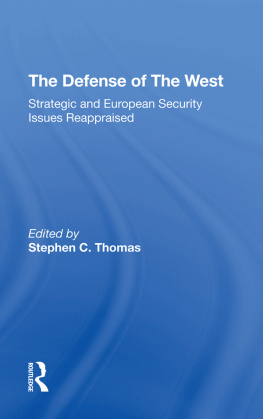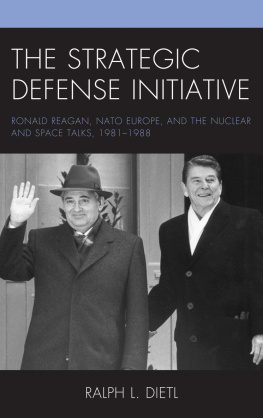Strategic Defense Initiative
About the Book and Editors
Intended for use as a text in courses on national security, arms control, and peace studies, this collection of statements by world leaders and eminent scholars offers an accurate and comprehensive guide through the maze of claims and criticisms about "Star Wars," the sensationally controversial effort of the Reagan administration to reorient U.S. nuclear strategy to strategic defense.
The contents include a thorough introduction by the editors and individual chapters outlining the strategic defense initiative as originally conceived and subsequently modified by the Reagan administration; the arguments for and against the plan's strategic and technical feasibility; and assessments of the harmful and constructive effects of strategic defense on U.S.-Soviet and U.S.-allied relations.
P. Edward Haley is director of the Keck Center for International Strategic Studies and chairman of the International Relations Committee, Claremont McKenna College. He has worked on the staffs of members of the U.S. Senate and House of Representatives and was an international affairs Fellow of the Council on Foreign Relations. Jack Merritt is professor emeritus of physics, Claremont McKenna College. Prior to coming to Claremont, he served as an administrative officer at the U.S. Atomic Energy Commission and the National Science Policy Organization of the Bureau of Budget.
Strategic Defense Initiative Folly or Future?
edited by P. Edward Haley and Jack Merritt
First published 1986 by Westview Press, Inc.
Published 2019 by Routlege
52 Vanderbilt Avenue, New York, NY 10017
2 Park Square, Milton Park, Abingdon, Oxon OX14 4RN
Routledge is an imprint of the Taylor & Francis Group, an informa business
Copyright 1986 Taylor & Francis
All rights reserved. No part of this book may be reprinted or reproduced or utilised in any form or by any electronic, mechanical, or other means, now known or hereafter invented, including photocopying and recording, or in any information storage or retrieval system, without permission in writing from the publishers.
Notice:
Product or corporate names may be trademarks or registered trademarks, and are used only for identification and explanation without intent to infringe.
Library of Congress Cataloging-in-Publication Data
Strategic defense initiative.
Bibliography: p.
Includes index.
1. Strategic Defense Initiative. I. Haley, P. Edward.
II. Merritt, Jack.
UG743.S776 1986 358'.1754 86-7810
ISBN 13: 978-0-367-28884-6 (hbk)
Contents
, P. Edward Haley and Jack Merritt
, Ronald Reagan
, Fred S. Hoffman
, Paul H. Nitze
, Lt. General James A. Abrahamson
, George Rathjens and Jack Ruina
, McGeorge Bundy, George F. Kennan, Robert S. McNamara, and Gerard Smith
, George A. Keyworth II
, Colin S. Gray
, Sidney D. Drell, Philip J. Farley, and David Holloway
Harold Brown
, James C. Fletcher
, Edward Teller
, Mikhail S. Gorbachev
, David Holloway
, Ronald Reagan
, Paul H. Nitze
, Christoph Bertram
, Sir Geoffrey Howe
, Helmut Kohl
, Margaret Thatcher
Guide
The purpose of this collection of articles is to make available to students, scholars, analysts, military leaders, and policymakers in this country and abroad the information they require in order to understand and develop their own views of the Reagan administration's Strategic Defense Initiative (SDI). The selections included in the text have been chosen to present the best argued and most representative opinions for and against SDI.
As with our earlier Nuclear strategy, Arms Control, and the future, which has happily been well received and widely adopted, we have acted in part to meet the needs of our students to have readily available a set of authoritative readings on major nuclear issues.
The development and publication of this book also reflect the continuing concern of the Keck Center for International Strategic Studies to contribute to the debate on questions concerning the central balance between the Soviet Union and the United States and the future of nuclear arms control.
We recognize that our readers may have found articles that they regard as more helpful in understanding one or another of the issues pertaining to SDI, and we welcome their suggestions.
The collaboration of Haley and Merritt continues to be a fruitful and pleasant one in class and in research and preparation of these and related studies.
We thank Miriam Gilbert, director of the College Division of Westview Press, for her continued support and interest in our work, and Jackie Melvin of the Keck Center for her assistance with the editorial tasks involved in completing the manuscript.
P. Edward Haley
Jack Merritt
When he announced the Strategic Defense Initiative (SDI) on March 23, 1983, President Ronald Reagan held out the prospect of the abolition of nuclear weapons. "Isn't it worth every investment necessary," he asked, "to free the world from the threat of nuclear war?"
It would not be a simple matter to abolish the balance of terror. The president challenged U.S. scientists to lead the way: "I call upon the scientific community in our country, those who gave us nuclear weapons, to turn their great talents now to the cause of mankind and world peace, to give us the means of rendering these nuclear weapons impotent and obsolete." In the meantime, the United States would maintain offensive nuclear deterrence and seek negotiated arms reductions with the Soviet Union.
Ambiguities of the SDI Strategy
The proposal, popularly known as Star Wars, instantly provoked a controversy not only in the United States but among allied governments and peoples and in the Soviet Union. The intensity of the reaction resulted from the strategic implications of the president's plan and from the daunting complexity of an undertaking to erect a missile-proof shield over the United States and its allies.
Critics and supporters of SDI alike were troubled by the administration's apparent turn away from the strategy of offensive nuclear deterrence. Deterrence is an attempt to prevent aggression by threatening to use nuclear weapons against an aggressor. The threat carries a warning that the losses inflicted will outweigh any benefits that might be won. The concept of deterrence, and the weapons and doctrine elaborated from it, has dominated nuclear strategy since 1945. Although the strategy of offensive nuclear deterrence is full of ambiguity and risk, its longevity lends a kind of familiarity and seeming predictability to the conflict between the Soviet Union and the United States. The possibility of upsetting the reign of offensive deterrence was bound to stir dissent and concern.
On the technical side, no one knew in 1983 whether the president's SDI could be built and no one knows today. The exotic technologies involved, such as high-power lasers, giant mirrors in space, electromagnetically accelerated projectiles, and extraordinarily complex computer programs, are either in their infancy or have yet to be developed. However, the astounding scope and pace of scientific and technological breakthroughs in the past century have made scientists and engineers understandably wary of predicting the impossibility of inventing anything. Even so, many scientists doubt that the weapons required for SDI can be made to work. Others doubt that it will be possible to create and make reliable the fantastically complex computer programs needed to detect thousands of incoming warheads from decoys and to aim and fire the weapons. With his address and his subsequent multi-billion-dollar funding requests and organized research and development program, the president appeared to take a step into the unknown on a subject of enormous human and political significance.

